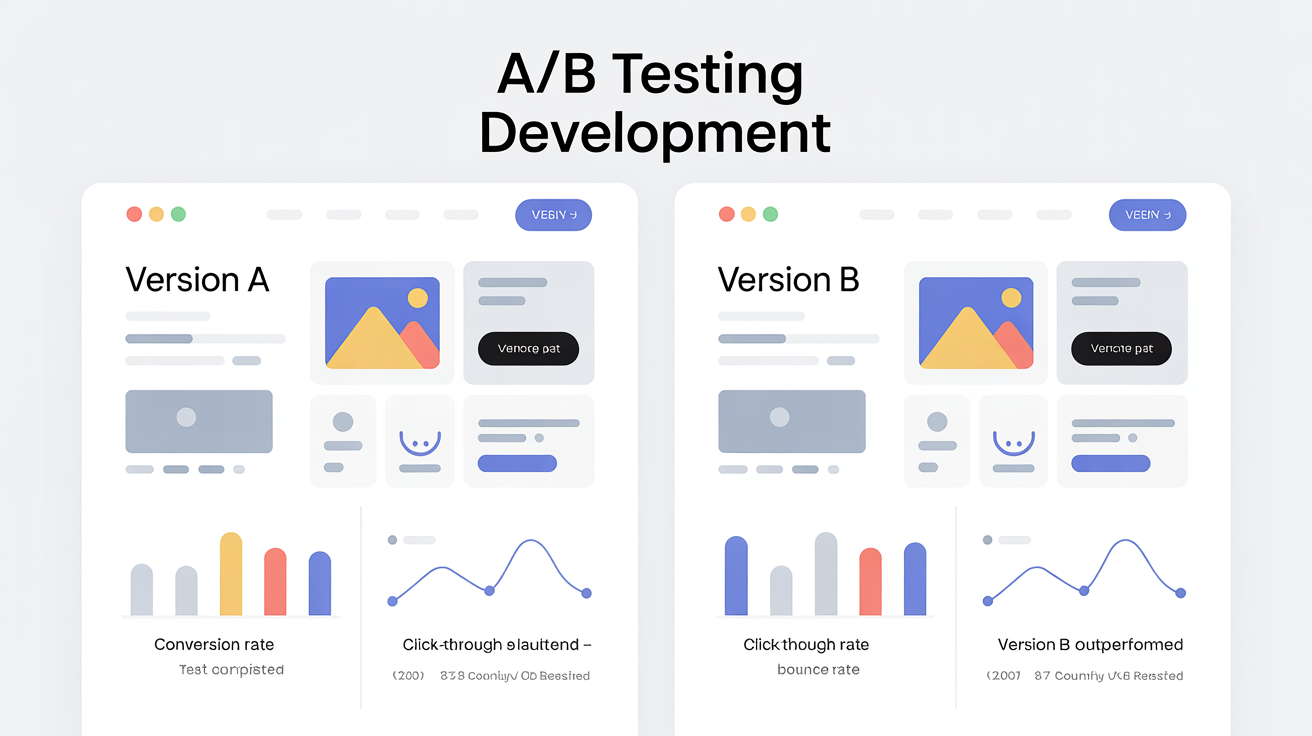What is A/B Testing and Why Does it Matter?
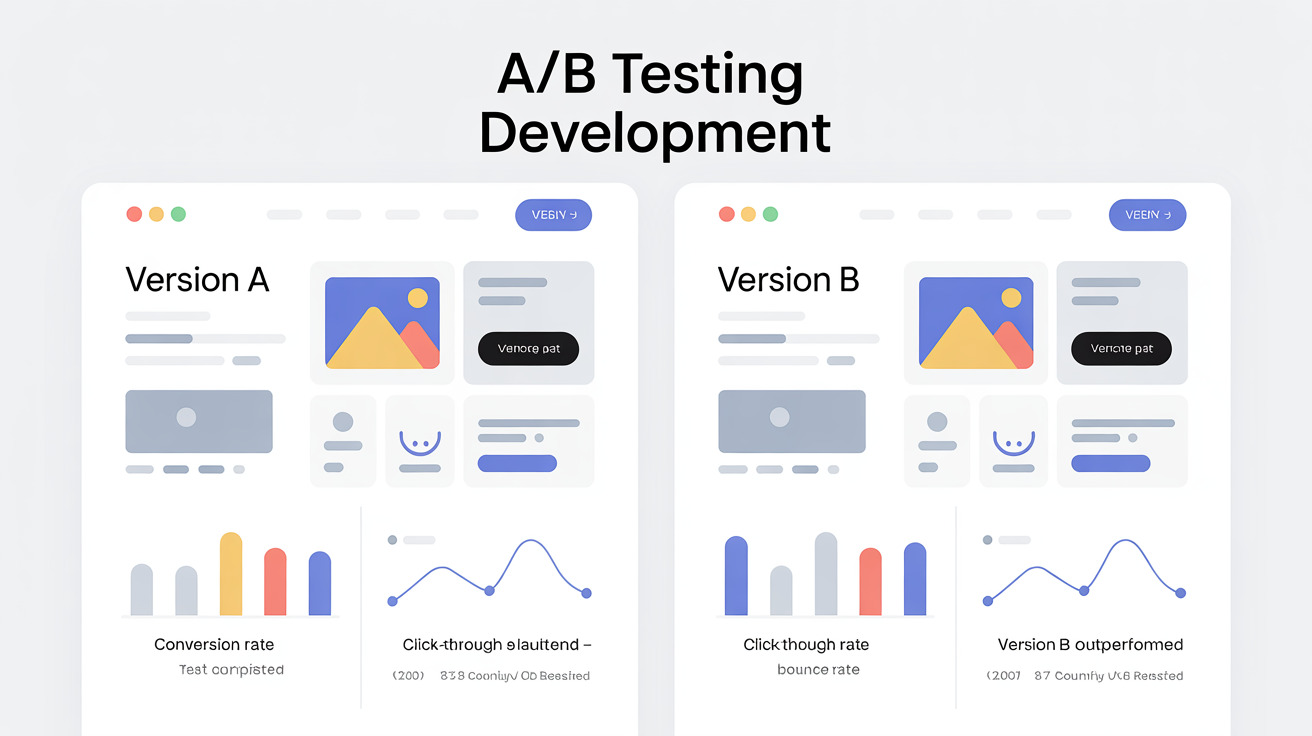
A/B testing compares two versions to determine which one performs better based on user data
A/B testing (also known as split testing) is a method of comparing two versions of a webpage, app feature, or marketing element to determine which one performs better. In its simplest form, it involves showing version A to one group of users and version B to another, then measuring which version drives more conversions, engagement, or other desired outcomes.
For development teams, A/B testing provides a structured framework for making improvements based on empirical evidence rather than assumptions. This approach is particularly valuable when:
- Launching new features or redesigns
- Optimizing conversion funnels
- Improving user experience
- Testing different messaging or content strategies
- Validating design decisions
The power of A/B testing lies in its ability to isolate variables and establish clear cause-and-effect relationships. By changing just one element at a time, you can determine exactly what impacts user behavior and by how much. This methodical approach reduces risk and increases the likelihood of meaningful improvements.
The A/B Testing Development Process
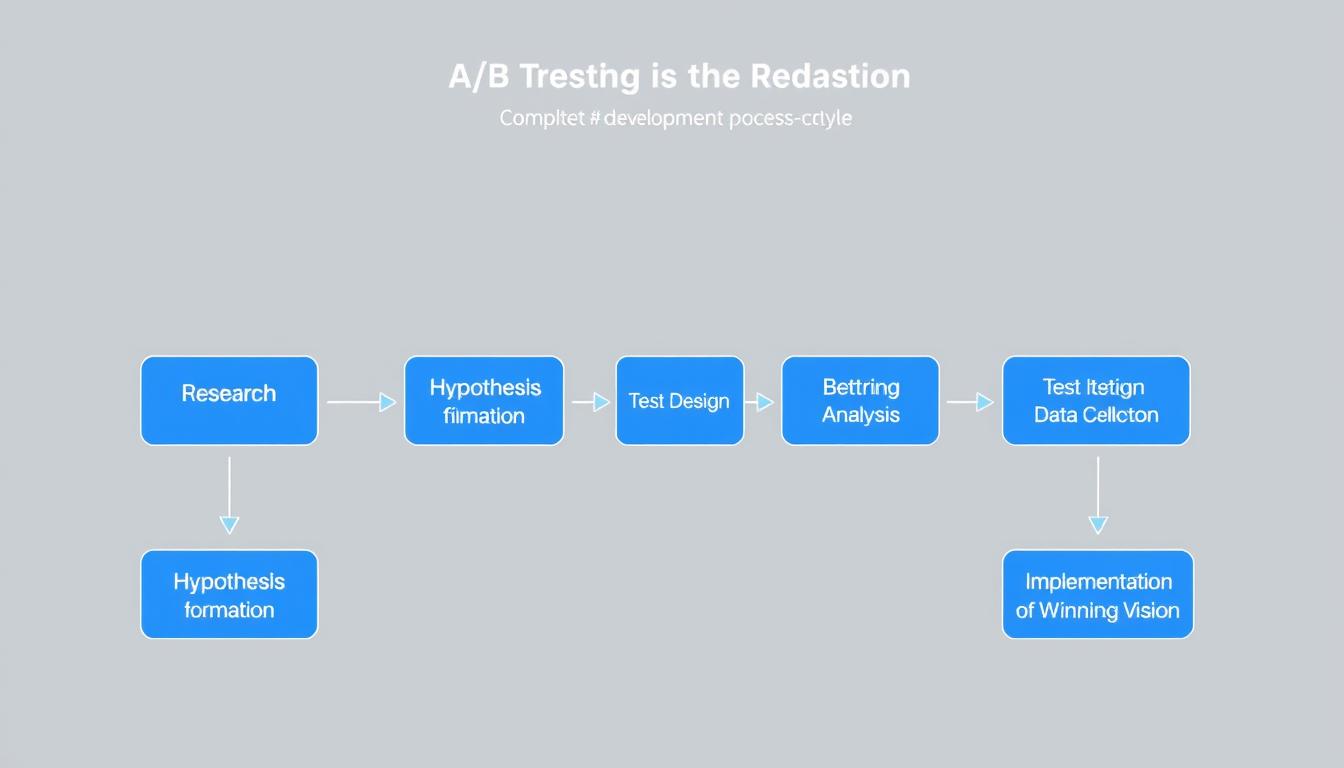
The complete A/B testing development cycle from research to implementation
Effective A/B testing follows a structured process that ensures reliable results and actionable insights. Let’s break down each step of the development process:
1. Define Clear Goals and Metrics
Before developing any A/B test, you need to establish what you’re trying to achieve. Your goals should be specific, measurable, and aligned with broader business objectives.
Common A/B Testing Goals:
- Increase conversion rate
- Reduce bounce rate
- Improve click-through rate
- Increase average order value
- Enhance user engagement
Example Metrics:
- Conversion percentage
- Revenue per visitor
- Form completion rate
- Time on page
- Cart abandonment rate
For each goal, define a primary metric that will determine success, along with secondary metrics to monitor for unexpected side effects. For example, if your goal is to increase sign-ups, your primary metric might be sign-up completion rate, while secondary metrics could include time spent on the sign-up page and bounce rate.
2. Research and Develop Hypotheses
Effective A/B tests are built on strong hypotheses derived from research. Collect data from multiple sources to identify opportunities for improvement:
- Analytics data (conversion funnels, drop-off points)
- User feedback and surveys
- Heatmaps and session recordings
- Usability testing
- Industry benchmarks
Based on your research, formulate clear hypotheses that follow this structure:
“We believe that [changing X] for [user group] will [achieve outcome] because [rationale].”
For example: “We believe that simplifying the checkout form for mobile users will increase completion rates because our analytics show a 40% higher abandonment rate on mobile compared to desktop.”
3. Create Test Variations
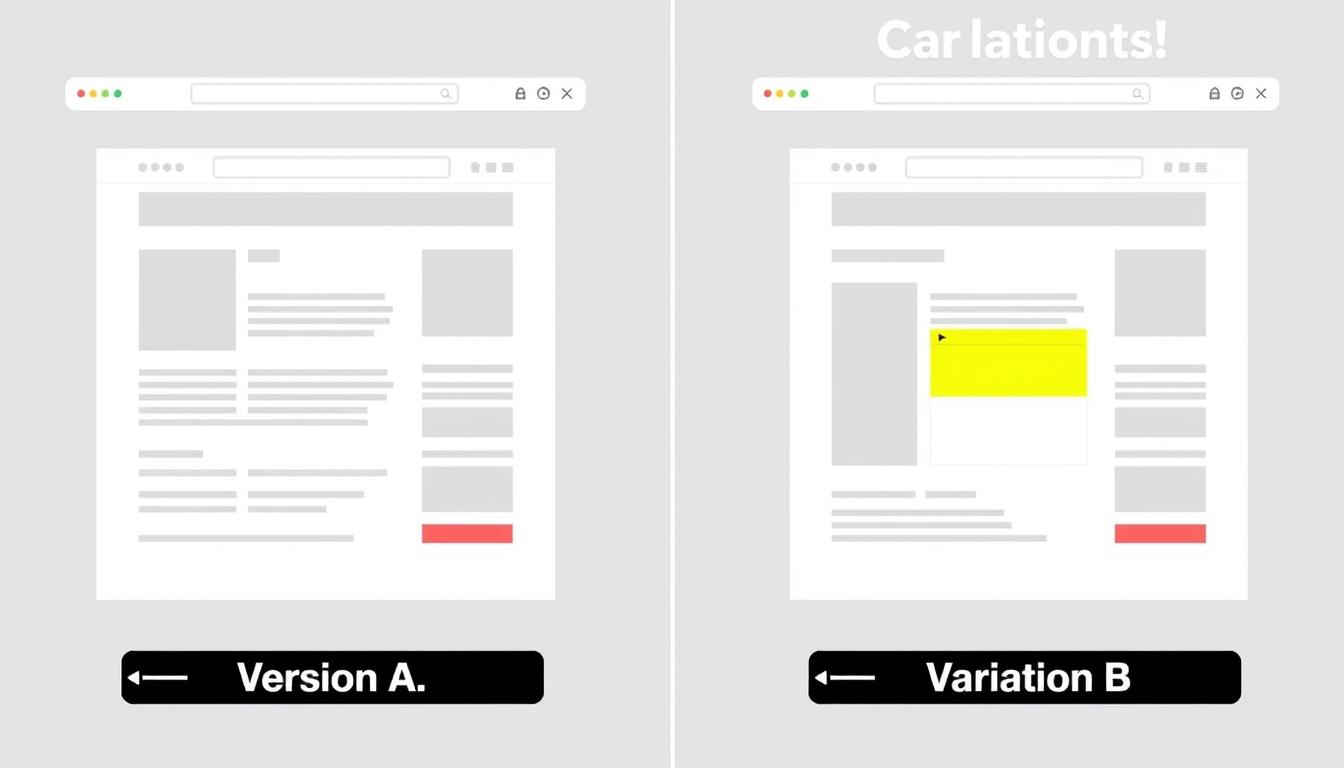
Example of control (Version A) and variation (Version B) in an A/B test
With clear hypotheses in place, it’s time to create your test variations. When developing variations, consider these best practices:
Best Practices
- Test one variable at a time for clear cause-effect relationships
- Ensure variations are significantly different to produce measurable results
- Maintain consistency in elements not being tested
- Consider the entire user journey, not just isolated elements
- Design variations that align with your brand guidelines
Common Mistakes
- Testing too many variables simultaneously
- Creating variations with minimal differences
- Ignoring mobile responsiveness
- Developing tests without clear hypotheses
- Overlooking technical implementation requirements
Common elements to test include:
Design Elements
- Button colors and sizes
- Page layouts
- Image selection
- Form design
- Navigation structure
Content Elements
- Headlines and copy
- Call-to-action text
- Product descriptions
- Social proof placement
- Pricing presentation
Functional Elements
- Form field requirements
- Checkout process steps
- Search functionality
- Filtering options
- Loading animations
4. Determine Sample Size and Test Duration
Statistical significance is crucial for reliable A/B test results. To ensure your test produces valid data, you need to determine the appropriate sample size and test duration.
Several factors influence sample size requirements:
- Baseline conversion rate
- Minimum detectable effect (the smallest improvement you want to detect)
- Statistical significance level (typically 95%)
- Statistical power (typically 80%)
- Traffic volume to the test page
Use an A/B test calculator to determine your required sample size based on these factors. Once you know your sample size, you can estimate the test duration by dividing the required sample by your daily traffic to the test page.
Pro Tip: For most business applications, aim for a 95% confidence level and 80% statistical power. This means you’re 95% confident that the observed difference is real, and you have an 80% chance of detecting a true difference if one exists.
Implementing A/B Tests: Technical Approaches
There are several technical approaches to implementing A/B tests, each with its own advantages and considerations. The right approach depends on your specific needs, technical resources, and the nature of what you’re testing.
Client-Side vs. Server-Side Testing
| Factor | Client-Side Testing | Server-Side Testing |
| Implementation | JavaScript runs in the user’s browser to modify content | Variations are rendered on the server before sending to the browser |
| Best For | UI changes, copy, layouts, visual elements | Functional changes, algorithms, backend processes |
| Setup Complexity | Lower (often no developer needed) | Higher (requires developer resources) |
| Performance Impact | Can cause flickering or slow page loads | Minimal impact on page performance |
| Testing Scope | Limited to browser-rendered elements | Can test anything in the application |
A/B Testing Tools and Platforms
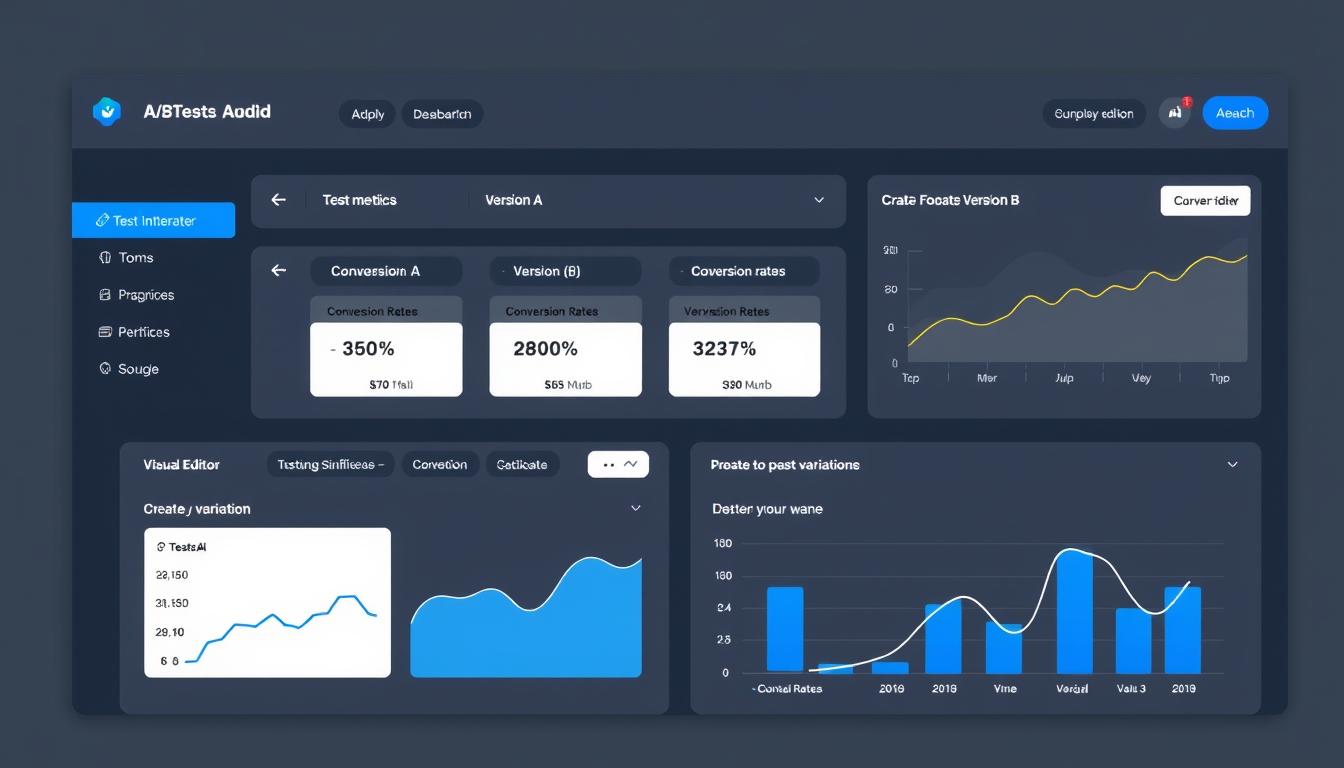
Example of an A/B testing platform dashboard for setting up and monitoring tests
Several tools can simplify the A/B testing development process. Here are some popular options:
Google Optimize
A free tool that integrates with Google Analytics, offering visual editor, redirect tests, and multivariate testing capabilities.
Best for: Teams new to A/B testing or with limited budgets.
Optimizely
A comprehensive experimentation platform with advanced targeting, segmentation, and analytics features.
Best for: Enterprise teams with complex testing needs.
VWO
An all-in-one testing platform with visual editor, heatmaps, and session recordings.
Best for: Mid-sized teams seeking a balance of features and usability.
Implementation Best Practices
Regardless of which tool or approach you choose, follow these best practices when implementing A/B tests:
- Use proper randomization: Ensure users are randomly assigned to variations to prevent bias.
- Implement consistent user experiences: Once a user is assigned to a variation, they should see that same variation throughout their session and on return visits.
- Consider SEO implications: Use canonical tags and proper redirects to prevent search engines from indexing test variations.
- Test across devices and browsers: Verify that variations work correctly across all supported platforms.
- Set up proper tracking: Ensure all relevant events and conversions are being tracked accurately.
- Document your implementation: Keep detailed records of how tests were implemented for future reference.
Technical Tip: When implementing client-side tests, use asynchronous JavaScript to load your testing tool to minimize impact on page load performance. For server-side tests, implement proper caching strategies to maintain performance.
Running Your A/B Tests
Once your test is implemented, it’s time to launch and monitor it. This phase requires careful attention to ensure valid results.
Pre-Launch Checklist
Before launching your A/B test, verify the following:
- All variations render correctly across devices and browsers
- Tracking is properly implemented and recording data
- Targeting and traffic allocation are configured correctly
- QA testing has been completed for all variations
- Stakeholders have been informed about the test
Monitoring Active Tests
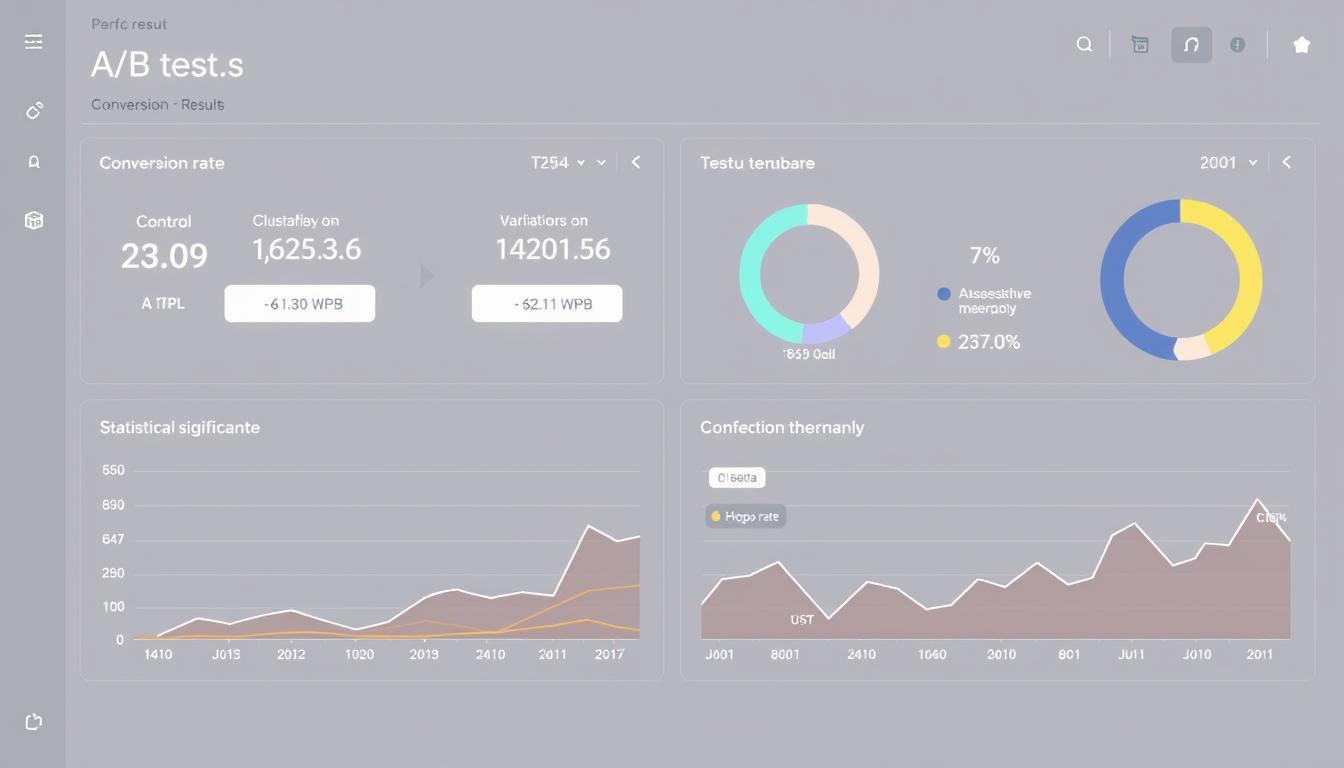
A/B test monitoring dashboard showing performance metrics and statistical significance
While your test is running, regularly monitor these aspects:
- Data integrity: Check for any anomalies or tracking issues
- Sample size progress: Track how close you are to reaching your required sample
- Early performance indicators: Watch for major differences that might indicate problems
- External factors: Note any marketing campaigns, seasonal events, or other factors that might influence results
Warning: Avoid the temptation to end tests early based on preliminary results. Statistical significance can fluctuate during a test, and ending early can lead to false conclusions. Always reach your predetermined sample size before declaring a winner.
Common Testing Pitfalls to Avoid
Be aware of these common issues that can compromise your test results:
Statistical Pitfalls
- Peeking: Making decisions before reaching statistical significance
- Multiple testing problem: Running too many tests simultaneously without adjusting significance levels
- Simpson’s paradox: When trends in subgroups reverse when groups are combined
- Ignoring sample size requirements: Ending tests too early with insufficient data
Implementation Pitfalls
- Flicker effect: When original content appears briefly before variations load
- Cross-device inconsistency: Users seeing different variations across devices
- Contaminated samples: When the same users appear in multiple variations
- Tracking errors: Missing or duplicate conversion events
Analyzing A/B Test Results
Proper analysis of A/B test results is crucial for making informed decisions. Here’s how to approach it:
Understanding Statistical Significance
Statistical significance tells you whether the difference between variations is likely due to the changes you made rather than random chance. A test is typically considered statistically significant when:
- The p-value is less than 0.05 (95% confidence level)
- The confidence interval doesn’t include zero (for absolute differences) or one (for relative differences)
- You’ve reached your predetermined sample size
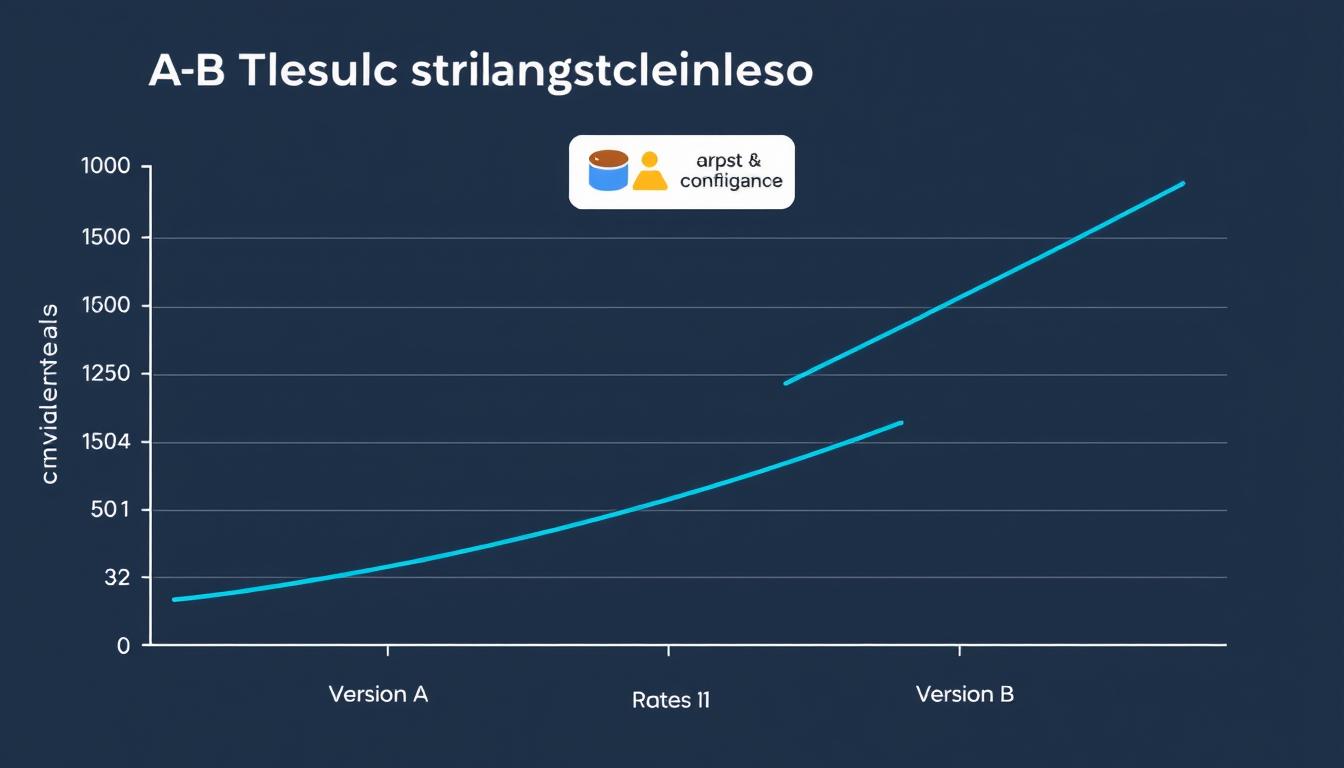
Statistical significance visualization showing confidence intervals for A/B test results
Interpreting Results Holistically
Look beyond just the primary metric when analyzing results:
- Segment analysis: Check if results vary across different user segments (new vs. returning, mobile vs. desktop, etc.)
- Secondary metrics: Evaluate the impact on other important metrics beyond your primary goal
- Long-term effects: Consider whether short-term gains might have negative long-term consequences
- Business impact: Translate statistical results into business value (revenue, customer lifetime value, etc.)
Making Data-Driven Decisions
Based on your analysis, you’ll typically make one of these decisions:
Implement the Winner
When one variation clearly outperforms the others with statistical significance, implement it as the new standard.
Iterate and Retest
If results are inconclusive or the improvement is minimal, refine your hypothesis and create new variations for testing.
Segment and Target
If different variations perform better for different segments, consider implementing personalized experiences for each segment.
“The goal of A/B testing isn’t just to find winners, but to develop a deeper understanding of your users and what drives their behavior.”
Documenting and Sharing Results
Create comprehensive documentation of your test results:
- Test hypothesis and rationale
- Variations tested with screenshots
- Test duration and sample size
- Results for primary and secondary metrics
- Segment analysis findings
- Conclusions and recommendations
- Learnings for future tests
Share these results with stakeholders in a format that emphasizes business impact rather than just statistical details. This helps build organizational support for continued testing.
Advanced A/B Testing Development Techniques
As you become more experienced with A/B testing, consider these advanced techniques to enhance your testing program:
Multivariate Testing
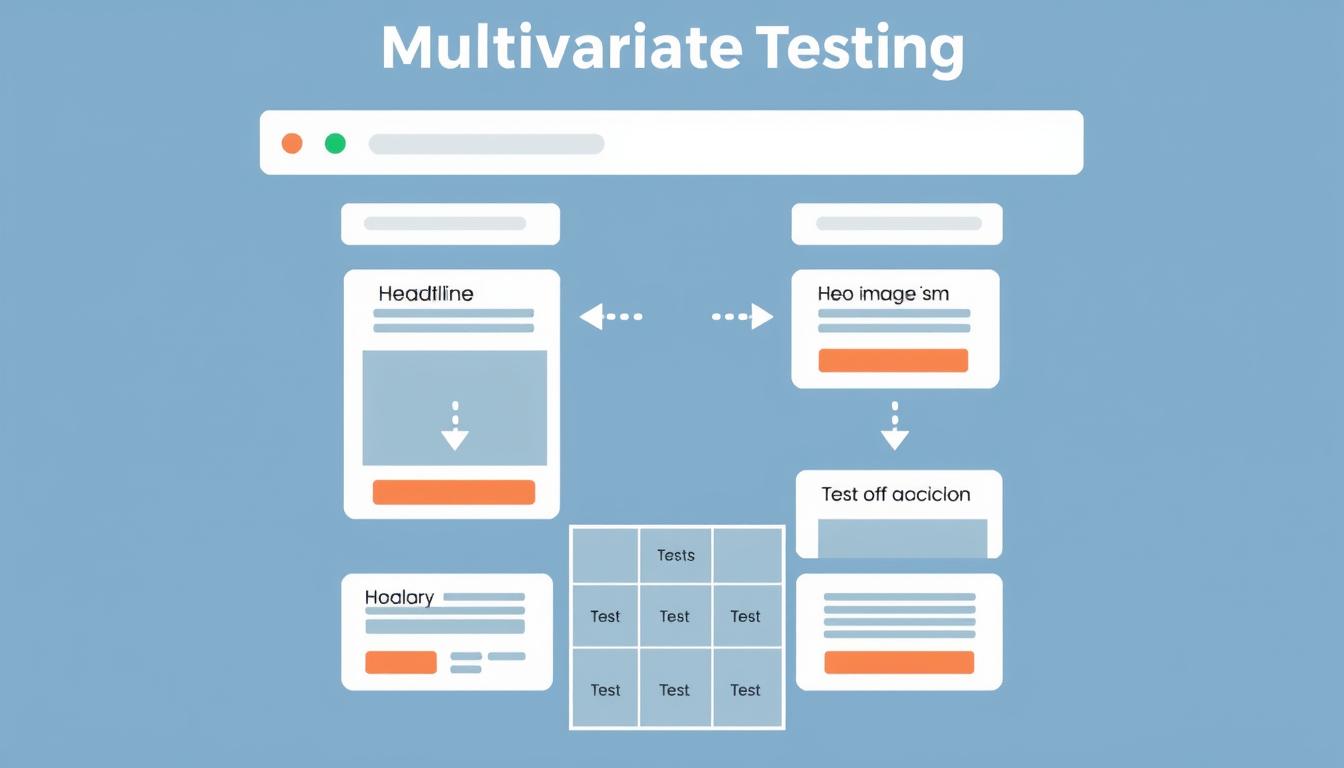
Multivariate testing allows testing multiple elements simultaneously to identify optimal combinations
While standard A/B testing compares two versions with a single variable changed, multivariate testing examines how multiple variables interact with each other. This approach helps identify the optimal combination of elements rather than testing each change in isolation.
For example, instead of testing button color and button text separately, multivariate testing would test all combinations (e.g., blue button with “Buy Now,” blue button with “Get Started,” green button with “Buy Now,” green button with “Get Started”).
Note: Multivariate testing requires significantly larger sample sizes than A/B testing, so it’s best suited for high-traffic pages.
Sequential Testing
Sequential testing allows you to make decisions as data accumulates, rather than waiting for a predetermined sample size. This approach can help you:
- End tests early when one variation is clearly superior
- Abandon underperforming variations to focus traffic on promising ones
- Add new variations mid-test based on early learnings
Sequential testing requires specialized statistical methods to maintain validity, such as Bayesian statistics or sequential probability ratio tests.
Personalization and Targeted Testing
Rather than testing the same variations across all users, targeted testing allows you to test different approaches for different user segments. This recognizes that what works for one user group may not work for another.
Consider segmenting tests based on:
- User demographics
- Behavioral patterns
- Traffic source
- Device type
- Customer lifecycle stage
This approach can lead to more nuanced insights and personalized user experiences that better meet the needs of different audience segments.
Multi-Page and Funnel Testing
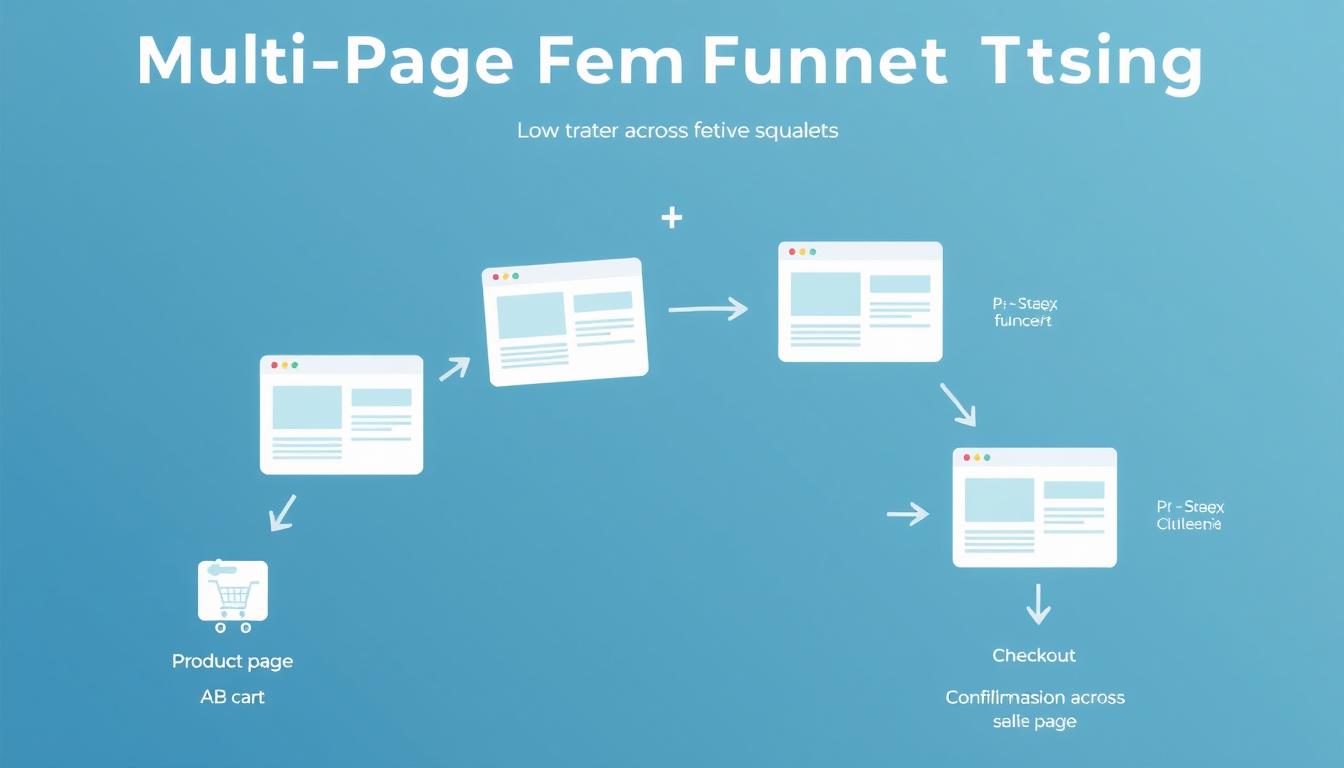
Multi-page testing examines how changes across a user journey impact overall conversion
Instead of testing isolated pages, multi-page testing examines how changes across a sequence of pages affect the overall user journey. This is particularly valuable for optimizing conversion funnels where user decisions span multiple steps.
For example, you might test different product page layouts in combination with different checkout processes to see which complete journey yields the highest conversion rate.
Building a Culture of Continuous Testing
To maximize the impact of A/B testing, it should become an integral part of your development and optimization process. Here’s how to build a sustainable testing culture:
Creating a Testing Roadmap
Develop a structured testing roadmap that aligns with business objectives:
- Prioritize tests based on potential impact and implementation effort
- Group related tests into themes or initiatives
- Balance quick wins with more substantial, long-term tests
- Schedule tests to avoid conflicts and seasonal anomalies
- Allow flexibility for opportunistic testing when new insights emerge
Cross-Functional Collaboration
Effective A/B testing requires collaboration across multiple disciplines:
Product/UX Teams
- Identify testing opportunities
- Develop hypotheses
- Design variations
- Interpret user behavior
Development Teams
- Implement test variations
- Ensure technical accuracy
- Maintain performance
- Deploy winning variations
Analytics Teams
- Set up proper tracking
- Validate data integrity
- Analyze test results
- Identify segments and patterns
Create processes that facilitate communication and collaboration between these teams, such as regular testing review meetings and shared documentation systems.
Learning and Iteration
Each test, regardless of outcome, provides valuable learning opportunities:
- Document insights from both successful and failed tests
- Build a knowledge base of what works and what doesn’t for your specific audience
- Use learnings to refine future hypotheses
- Share insights across teams to inform other initiatives
- Periodically retest previous findings to verify their continued validity
“The true value of A/B testing lies not just in the immediate wins, but in the cumulative knowledge that builds over time.”
Measuring Program Success
Beyond individual test results, measure the overall impact of your testing program:
- Cumulative lift from implemented test winners
- Test velocity (number of tests completed per month/quarter)
- Learning rate (new insights generated per test)
- Implementation rate (percentage of winning tests actually implemented)
- Return on investment (value generated relative to program costs)
Regularly review these metrics to identify opportunities to improve your testing process and demonstrate the value of testing to stakeholders.
Overcoming Common A/B Testing Challenges
Even experienced teams encounter challenges with A/B testing. Here are solutions to common obstacles:
Low Traffic and Conversion Volumes
For sites with limited traffic, reaching statistical significance can take a long time. Consider these approaches:
- Test bigger changes: Larger differences between variations require smaller sample sizes to detect
- Focus on high-traffic pages: Prioritize tests on your most visited pages
- Test earlier in the funnel: Pages with more traffic allow for faster results
- Reduce the number of variations: Test fewer variations to reach significance faster
- Consider longer test durations: Be prepared to run tests for weeks or months
Technical Implementation Challenges

Technical implementation of A/B tests often requires custom code and integration with testing platforms
Technical issues can compromise test validity. Address these common problems:
- Flickering: Use asynchronous loading and proper hiding techniques
- Cross-browser compatibility: Test thoroughly across all supported browsers
- Mobile responsiveness: Ensure variations work well on all device sizes
- Performance impact: Optimize code to minimize page load impact
- Integration with existing systems: Develop clean interfaces between testing tools and your codebase
Organizational Resistance
Sometimes the biggest challenges are organizational rather than technical:
- HiPPO effect (Highest Paid Person’s Opinion): Use data to counter subjective opinions
- Risk aversion: Start with low-risk tests to build confidence
- Resource constraints: Demonstrate ROI to justify additional resources
- Siloed teams: Create cross-functional testing committees
- Lack of patience: Educate stakeholders on the importance of statistical validity
“The most successful testing programs aren’t necessarily those with the most sophisticated tools, but those with the strongest organizational commitment to data-driven decision making.”
Maintaining Test Validity
Various factors can threaten the validity of your test results:
Internal Validity Threats
- Seasonal effects
- Marketing campaigns
- News and external events
- Technical issues
- Multiple concurrent tests
External Validity Threats
- Non-representative sample
- Novelty effects
- Short test durations
- Changing user expectations
- Market evolution
To maintain validity, document potential confounding factors, run tests for full business cycles when possible, and periodically retest important findings to confirm their continued relevance.
The Future of A/B Testing Development
A/B testing continues to evolve with advances in technology and methodology. Here are some emerging trends to watch:
AI and Machine Learning Integration
Artificial intelligence is transforming A/B testing in several ways:
- Automated hypothesis generation: AI systems suggesting test ideas based on pattern recognition
- Dynamic traffic allocation: Automatically directing more traffic to better-performing variations
- Personalized testing: Delivering the optimal experience to each user based on their characteristics
- Predictive analytics: Forecasting test outcomes before reaching full sample size
- Multivariate optimization: Finding optimal combinations from vast possibility spaces
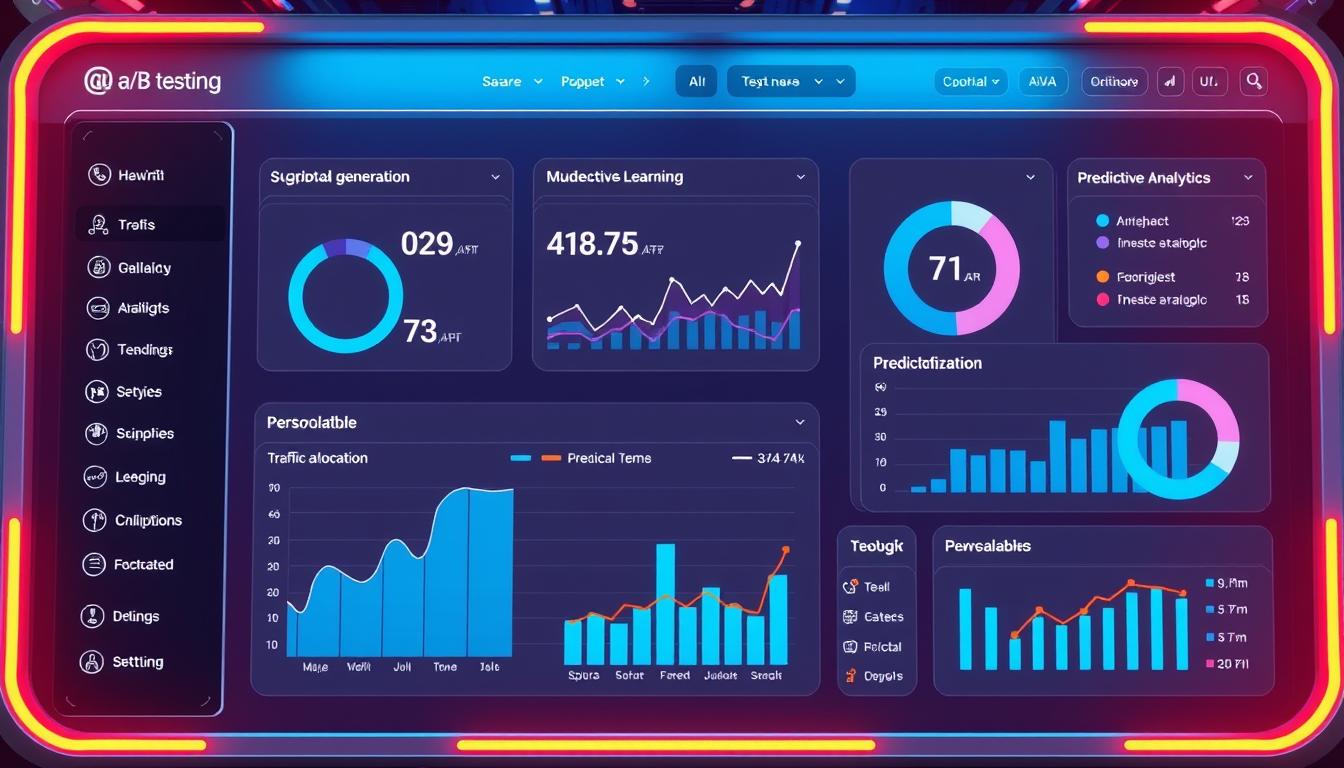
AI-powered testing platforms can automate hypothesis generation and optimization
Server-Side and API Testing
As applications become more complex and privacy concerns increase, server-side testing is gaining prominence:
- Testing backend algorithms and services
- Experimenting with API responses and data structures
- Implementing tests that work with ad blockers and privacy tools
- Enabling more sophisticated functional tests beyond UI changes
- Improving performance by eliminating client-side rendering delays
Cross-Platform and Omnichannel Testing
Modern user journeys span multiple devices and channels, creating new testing challenges and opportunities:
- Coordinated testing across web, mobile apps, and other touchpoints
- Tracking user behavior across devices and sessions
- Testing integrated experiences that combine digital and physical interactions
- Optimizing for voice interfaces and emerging platforms
- Creating consistent yet platform-optimized experiences
These advances will enable more sophisticated testing programs that deliver increasingly personalized and optimized user experiences across all touchpoints.
Conclusion: Building Your A/B Testing Development Strategy
A/B testing is a powerful methodology for making data-driven improvements to your digital products. By systematically comparing alternatives and measuring their impact on user behavior, you can continuously optimize the user experience and drive business results.
To build an effective A/B testing development strategy:
- Start with clear goals and metrics aligned with business objectives
- Develop strong hypotheses based on research and user insights
- Create meaningful variations that test specific elements
- Implement tests with technical precision and statistical rigor
- Analyze results holistically, considering both primary and secondary impacts
- Document and share learnings to build organizational knowledge
- Cultivate a culture of continuous testing and optimization
Remember that A/B testing is not a one-time activity but an ongoing process of learning and improvement. Each test builds upon previous insights, creating a cycle of continuous optimization that keeps your digital experiences competitive and effective.
By following the principles and practices outlined in this guide, you’ll be well-equipped to develop and implement A/B tests that deliver meaningful improvements to your user experience and business outcomes.
Ready to Start Your A/B Testing Journey?
Put your new knowledge into practice and start optimizing your digital experiences with data-driven decisions. Begin with a simple test on a high-traffic page to build momentum and demonstrate the value of A/B testing to your organization.
Frequently Asked Questions About A/B Testing Development
How long should I run my A/B test?
The duration of your A/B test depends on several factors, including your traffic volume, conversion rate, and the minimum detectable effect you want to measure. As a general rule, you should:
- Run tests for at least one full business cycle (typically 1-2 weeks) to account for day-of-week effects
- Ensure you reach your predetermined sample size for statistical significance
- Avoid ending tests early based on preliminary results
- Use an A/B test calculator to estimate the required duration based on your specific metrics
Can I test multiple elements at once?
While it’s generally recommended to test one element at a time for clear cause-and-effect relationships, there are situations where testing multiple elements makes sense:
- When elements are closely related and work together (e.g., headline and supporting image)
- When testing a complete redesign or new concept
- When using multivariate testing to understand interactions between elements
Just be aware that testing multiple elements requires larger sample sizes and makes it harder to determine which specific changes drove the results.
How do I prioritize which tests to run first?
Prioritize your A/B tests based on a combination of factors:
- Potential impact: Estimate how much improvement the test could drive
- Implementation effort: Consider the resources required to create and implement the test
- Strategic alignment: Prioritize tests that support key business objectives
- Traffic volume: Tests on high-traffic pages will reach significance faster
- Confidence in hypothesis: Prioritize tests with strong supporting evidence
Many teams use frameworks like PIE (Potential, Importance, Ease) or ICE (Impact, Confidence, Ease) to score and rank potential tests.
What if my A/B test results aren’t statistically significant?
If your test doesn’t reach statistical significance, consider these options:
- Run the test longer to collect more data
- Analyze segments to see if the change had an impact on specific user groups
- Revise your hypothesis and create a more substantial variation
- Test on a higher-traffic page to reach significance faster
- Document the learnings and move on to a different test
Remember that inconclusive results are still valuable—they help you eliminate ineffective approaches and refine your understanding of user preferences.
How do I ensure my A/B test is technically sound?
To ensure technical accuracy in your A/B tests:
- Use proper randomization to assign users to variations
- Implement consistent user experiences across sessions
- Test across all supported browsers and devices
- Verify that tracking is capturing all relevant events
- Minimize page load impact, especially for client-side tests
- Consider SEO implications and use proper canonical tags
- Conduct thorough QA testing before launching
Working closely with developers and using established testing platforms can help ensure technical soundness.
